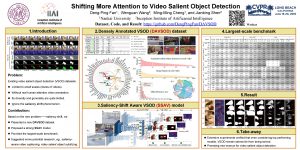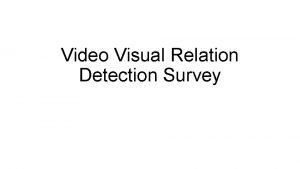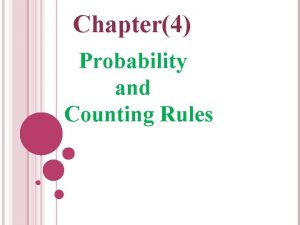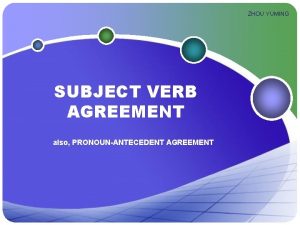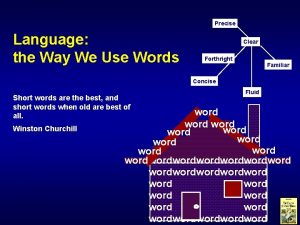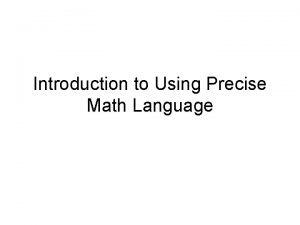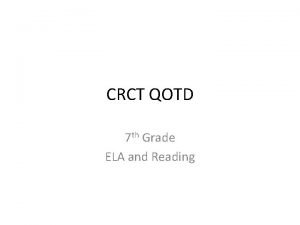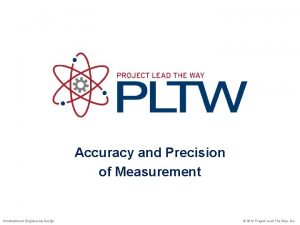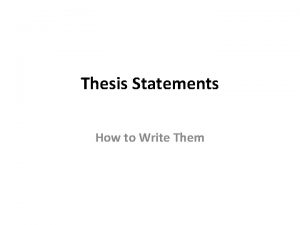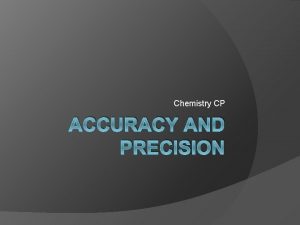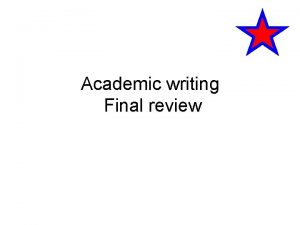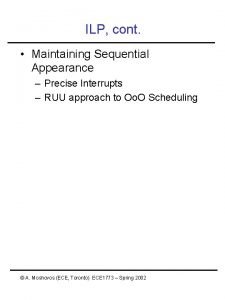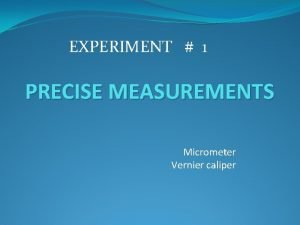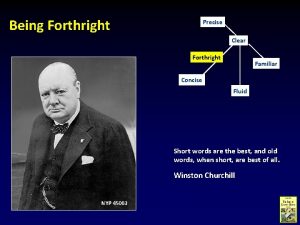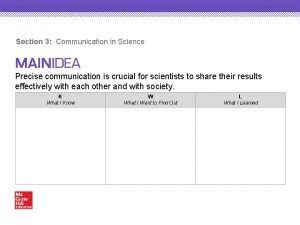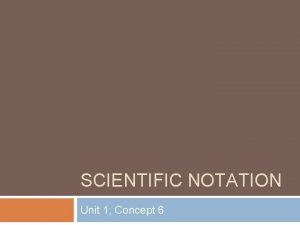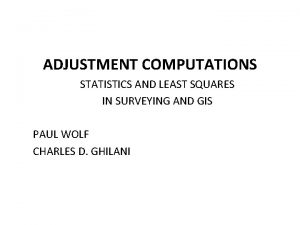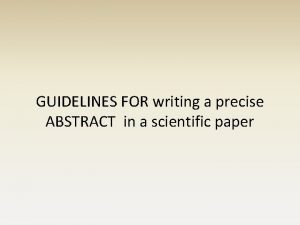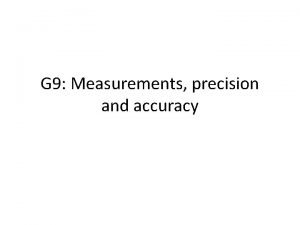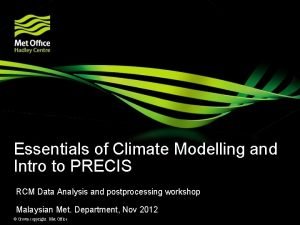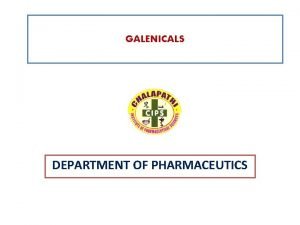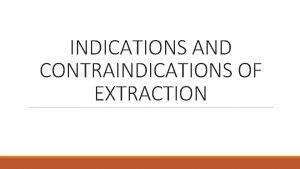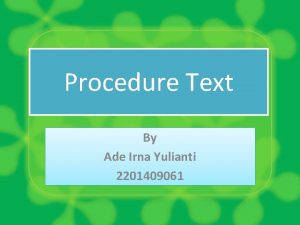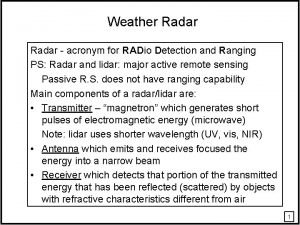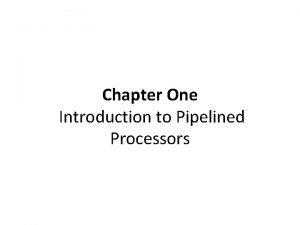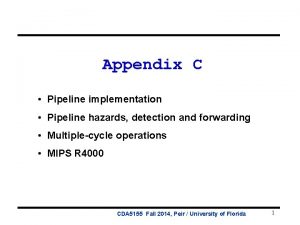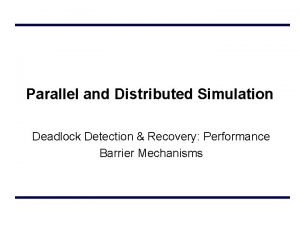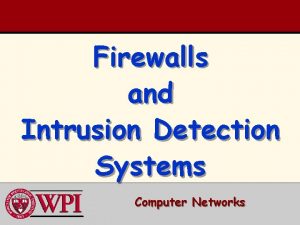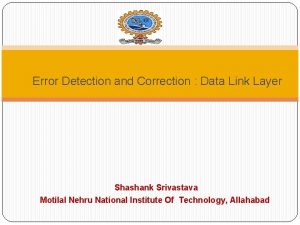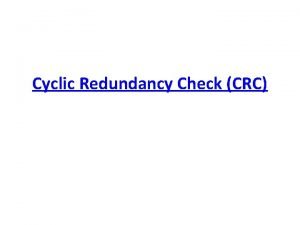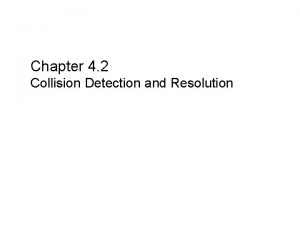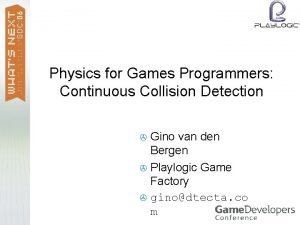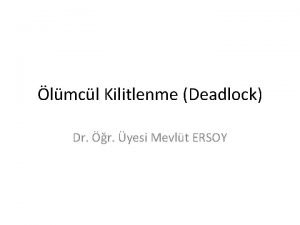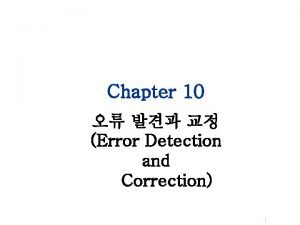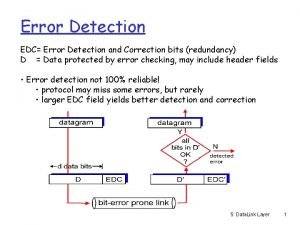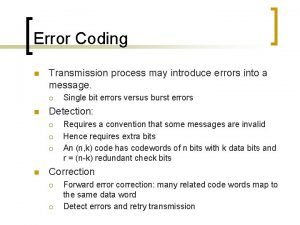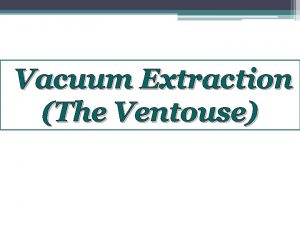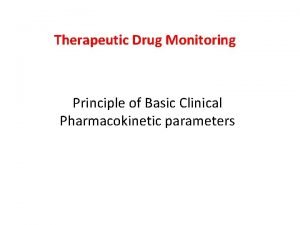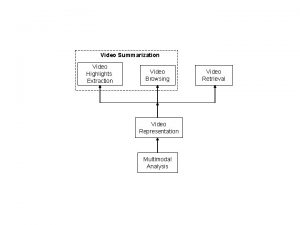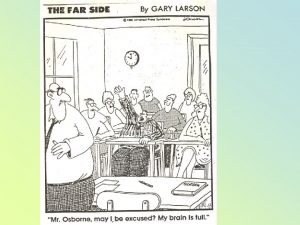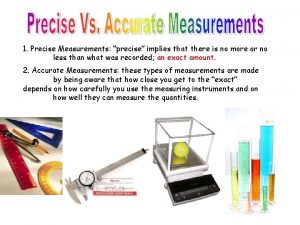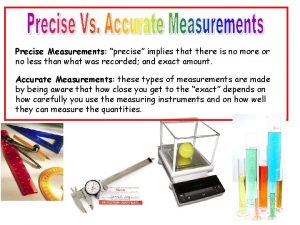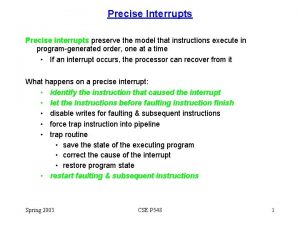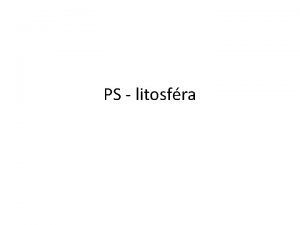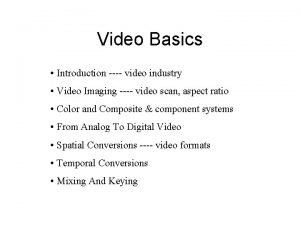Precise News Video Text Detection and Text Extraction






































































![original image (cited from [30]) Niblack’s method (cited from [30]) [30] approach (cited from original image (cited from [30]) Niblack’s method (cited from [30]) [30] approach (cited from](https://slidetodoc.com/presentation_image_h/e136aa5bfa96df32a4fad7defd657a2c/image-71.jpg)
![original image (cited from [29]) Otsu’s method Lin’s method Niblack’s method (cited from [29]) original image (cited from [29]) Otsu’s method Lin’s method Niblack’s method (cited from [29])](https://slidetodoc.com/presentation_image_h/e136aa5bfa96df32a4fad7defd657a2c/image-72.jpg)
![original image (cited from [29]) Lin’s method Otsu’s mehod Niblack’s method (cited from [29]) original image (cited from [29]) Lin’s method Otsu’s mehod Niblack’s method (cited from [29])](https://slidetodoc.com/presentation_image_h/e136aa5bfa96df32a4fad7defd657a2c/image-73.jpg)



- Slides: 76

Precise News Video Text Detection and Text Extraction Based on Multiple Frames Integration Advisor: Dr. Shwu-Huey Yen Student: Hsiao-Wei Chang 1

Outline 1 2 3 4 5 6 Introduction Related work Edge detection Proposed Method Experimental Results Conclusion 2

1 Introduction Video text can be scene text or caption text. Caption text, static or scrolling, is superimposed in a later stage of videos producing. Most static texts provide concise and direct description of the content presented in news video. 3

The procedure of video textual information extraction can be divided into two categories; detection and extraction. 4

2 Related work Video text detection methods can be classified into three classes. The first class is texture-based. The second class presumes that a text string contains a uniform color. The third class is edge-based. 5

Text extraction methods can be classified into two classes. The first class is global. The second class is local. 6

Niblack proposed calculating the threshold value by shifting a window across the image. The threshold is determined by the following formula: T(x, y) = m(x, y) + k * s(x, y), where m(x, y) and s(x, y) are local mean and standard deviation values, respectively. The value of k is a parameter. 7

Sauvola established on Niblack’s algorithm. The threshold is determined by the following formula: T(x, y) = m(x, y) * (1 + k * (s(x, y)/R - 1)) where m(x, y) and s(x, y) are as in Niblack's formula. R is the dynamic range of standard deviation, and a parameter k. 8

3 Edge detection 3. 1 Sobel Edge detection The Sobel masks are -1 0 1 -2 0 2 -1 0 1 -1 -2 -1 0 0 0 1 2 1 the horizontal mask the vertical mask 9

The magnitude of the gradient is then calculated using the formula: 10

3. 2 Canny edge detection The Canny algorithm contains three parameters. The size of the Gaussian filter. Thresholds: the use of two thresholds with hysteresis allows more flexibility than in a singlethreshold approach. 11

(a) original image (b) Sobel edge (c) Canny edge 12

4 The Proposed Method 4. 1 Text Detection People need 2 seconds or more to process a complex scene. Thus, if videos are played f frames per second, we are interested in video texts focusing on a fixed location for at least 2 f consecutive frames. Let k be the nearest integer that is not less than f. 13

On the mth round, four reference frames on frames (m-1) k+i, i= 1, k/3 , 2 k/3 , 3 k/3 are chosen. We set h and w are the height and width of the character size. 14

Fig. 1. The flowchart of the proposed approach. 15

Step 1: Get four reference frames from the given one round of video frames and transform them into grayscale images. We use Eq. (1) to accomplish this. (1) where Y is the intensity value. 16

(a Fig. 2. Four color reference frames. 17

Fig. 3. Four grayscale reference images. 18

Step 2: Execute the edge detection. The Canny edge detector is applied on each grayscale image yielding an edge map. A simple line deletion (horizontal and vertical) is followed if a line is too long. 19

Fig. 4. Four Canny edge detection maps after removing lines that are too long. 20

Step 3: Do logical AND on Canny edge maps. Note that after AND operation, a position (i, j) is true (an edge pixel) if all four Canny edge maps are true at (i, j). 21

Fig. 5. The AND-edge-map: the result after taking AND operation on four Canny edge maps of Fig. 4. 22

Step 4: Mask text location. A three-stage technique is designed to find the text mask. (a) A window the size of w h (presumed character size) slides from left to right (per column) and top to bottom (per row) on the AND -edge-map. 23

The value of BWT represents the transitions from black to white or from white to black. where b( )=1 if it is black and 0 otherwise. If BWT is larger than the threshold TBWT , this window is masked. 24

(a) (b) Fig. 6. (a) Edge of the string. (b) Edge of English letter “I”. 25

The threshold TBWT depends on the character size. “I” is the one with the least black-and-white transitions in English letters. Figure 6 shows each letter has dimension approximately 10 18 and the BWT in Fig. 6(b) is 72 which is 0. 4 of 10 18. The experimental results on many multilingual video texts are satisfying when is 0. 35, TBWT = (w h). 26

(b) The rough mask is examined. A horizontal line segment of length w comprising points on (i, j), …, (i+w-1, j) will be eliminated if neither of these points is an edge; and a vertical line segment of length h comprising points on (i, j), …, (i, j+h-1) will be eliminated if neither of them is an edge point. 27

(c) Considering the different background and various contrast in reference frames, the results of the Canny edge detector of the same text on different frames may differ in a few pixels. This usually causes characters to lose some pixels in the AND-operation. 28

To alleviate this problem, a morphological compensated image M is obtained by first applying a closing. Isolated blobs of small size are removed followed by a dilation to extend the text region.

(a) The obtained rough mask (c) Isolated noises removal (b) Non-text pixels removal (d) Morphological compensation 30

Step 5: Exact text location. To do the refinement, we examine every white pixel. If a white pixel is located on (i, j) position, then points located on top, bottom, left, and right of (i, j) position of the edge map will be examined. 31

In checking the upward direction, on the binary edge map, if (i, j-1), (i, j-2), …, (i, j-k+1) points are all white and (i, j-k) is the first edge pixel (black point), then every point on (i, j-1), (i, j-2), …, (i, j-k+1) in the rough text (grayscale) image must be non-text accordingly. Thus, any non-white pixels will be converted into white in the rough text image. 32

(a) The rough text image (b) The result after refinement Effectiveness of text refinement before and after. 33

Finally, to label the detected texts, we do a simple binarization on the refined text image followed by a morphological operation to connect texts that are close to each other.

Fig. 9. Some results of our method. 35

4. 2 Text Extraction The flowchart of the proposed approach is given in Fig. 12. 36

Fig. 12. The flowchart of the proposed approach 37

First, for video text which is captured in a tightly bounded, we extend both the upper and lower boundary of the box at least 1 pixel to ensure that sufficient pixels are included for the application of Canny edge detector. 38

We compare the pixel intensity of each column both from top to bottom and from bottom to top until we reach the pixel position identified as Canny edge or the end of the boundary if there is no Canny edge. When the comparison is complete, we get the range of the background intensity. 39

Let bmin and bmax be the least and the largest intensity values for those encountered pixels. The range of the background intensity is thus defined as B = [bmin, bmax]. It is possible that B covers the entire range of the intensity. According to B, we will discuss the binarization in two cases. 40

Case (1): B does not cover the entire range of the histogram. We use the interval B to determine the range of foreground intensity F. Since text polarity is initially unknown, the midpoint of B can be used to estimate the foreground intensity. 41

If intensity of the midpoint of B is bright (>128), then the text is positive polarity, and negative polarity otherwise. 42

grayscale image histogram intensity information 43

we define the text intensity T as where p and are the peak and the standard deviation of F, and k is a constant. In our experiments, k is set as 1. 80. 44

(a) (b) (c) (d) (e) (a) original image, (b) extended image, (c) grayscale image, (d) Canny edge map, (e) final image for OCR. 45

Case (2): B covers the entire range of the histogram. Fig. 15. original image Otsu Lin Niblack Sovola Fig. 16. binarization results 46

To solve this problem, we reverse the refined image to recover the original text polarity. Repeat the steps, i. e. , producing histogram, Canny edge map, and the background range B on this reversed image. Now, the background intensity range B is [0, 97]. 47

refined image histogram reverse Canny map intensity information 48

For each background pixel P, if its intensity is within the range of text intensity T, then its intensity value will be replaced by where I(P) is the intensity of P. 49

(a) (b) Fig. 20. (a) modify background intensities of Fig. 15; (b) proposed algorithm binarization result 50

5 The Experimental Results 5. 1 Text Detection Results The proposed text detection algorithm was evaluated on multilingual videos clips for a total of approximately 30 minutes. All of these videos have a resolution of 400 300 and a frame rate 29. 97 per second. The presumed largest character size w h was set to be 20 20 and in TBWT was set to be 0. 35. 51

(a) (b) (c) Fig. 22. Three bounding boxes for the same text from large to small. (a) (b) (c) (d) (e) Fig. 23. Detected boxes (in yellow) for a ground truth text (in blue) that (a) and (b) fail to detect, (c)~(e) truly detect it but only (e) accurately matched. 52

In Fig. 22. the dimensions of bounding boxes are 88 20, 86 18, and 84 16 for (a), (b), (c) respectively. Any of them are perfect, but the area in (c) is only 76. 4% of that in (a). To accommodate these cases, we take the medium bounding box, the one in (b), as the ground truth. 53

A detected box truly detects the texts if the area ratio r, defined in (3), is at least 50%. (3) where D_BOX is a detected box, like yellow boxes in Fig. 23, G_BOX is the ground truth text box, like blue boxes in Fig. 23. 54

To focus the bounding preciseness, if the area ratio r is at least 80% we say the text is accurately detected. We use recall (R), precision (P), and quality of bounding preciseness (Q) to measure the efficacy of algorithms as in (14), (15), (16). 55

(14) (15) (16) 56

(a) (b) (c) (d) Fig. 24. The ambiguities in defining a ground truth for “TALK & VIRGINIA SHOWDOWN”. 57

Take characters “TALK & VIRGINIA SHOWDOWN” in Fig. 24 as an example. We accept all (a)~(d) cases to be ground truths. However, cases (a) and (b) are better because detected regions should be as tight as possible. 58

(a) (b) (c) (d) 59

( e) (f) Fig. 25. Some results of our method(size 400 x 300). (a) and (b) are CNN videos, (c) ESPN video, (d) NHK video from Japan, (e) and (f) are two different news videos from Taiwan. 60

Table 1. Results on Different Video sources D_BOX_F Video Sources Type/Language Length min sec # of G. boxes CNN News/English 9’ 16” ESPN Sport/English NHK ETTV TVBS Total D_BOX_T # of False Alarms # of boxes w. r < 50% # of boxes w. 50% r < 80% # of boxes w. r 80% 404 0 4 9 391 5’ 07” 111 29 71 News/Japanese 5’ 35” News/Chinese 5’ 29” News/Chinese 4’ 51” --/-30’ 18” 310 939 1340 3104 0 0 0 2 0 0 64 79 0 27 57 122 310 912 1219 2903 61

Table 2. Results on R, P, and Q Channel Recall Precision Quality CNN 400/404= 99. 01% 391/400= 97. 75% ESPN 100/111= 90. 09% 100/113= 88. 50% 71/100= 71. 00% NHK ETTV TVBS 310/310=100. 00% 939/939=100. 00% 1276/1340= 95. 22% 310/310=100. 00% 912/939= 97. 12% 1219/1276= 95. 53% Average 3025/3104= 97. 45% 3025/3106= 97. 39% 2903/3025= 95. 97% 62

We summarize the contributions of the proposed algorithm in the following: Ø Precise boxes. Ø Positive and negative text polarities. Ø The alignment and the length of text strings. Ø Sizes, fonts, and multi-color characters.

The worst experimental result is the ESPN video due to the small, isolated, and sparsely located characters. We repeated the experiment with a presumed character size of w h to be halved (10 10). 64

(a) (b) (c) (d) Fig. 28. Some results of other’s method. (a) Hua et al. , 2001, (b) Wang et al. , 2004, (c) Anthimopoulos et al. , 2008, (d) Huang et al. , 2008. 65

Our proposed algorithm works well at different size (640 x 480) image.

5. 2 Text Extraction Results We evaluated the performance of our proposed method comparing with Otsu, Lin, Niblack, and Sauvola methods.

original image Niblack’s method Otsu’s method Sauvola’s method Lin’s method our method

original image Niblack’s w=20, k=0. 2 Otsu’s method Sauvola’s w=20, k=0. 2 Lin’s method our method 69

original image Otsu’s method Lin’s method Niblack’s method Sauvola’s method our method
![original image cited from 30 Niblacks method cited from 30 30 approach cited from original image (cited from [30]) Niblack’s method (cited from [30]) [30] approach (cited from](https://slidetodoc.com/presentation_image_h/e136aa5bfa96df32a4fad7defd657a2c/image-71.jpg)
original image (cited from [30]) Niblack’s method (cited from [30]) [30] approach (cited from [30]) [25] approach (cited from [30]) our method 71
![original image cited from 29 Otsus method Lins method Niblacks method cited from 29 original image (cited from [29]) Otsu’s method Lin’s method Niblack’s method (cited from [29])](https://slidetodoc.com/presentation_image_h/e136aa5bfa96df32a4fad7defd657a2c/image-72.jpg)
original image (cited from [29]) Otsu’s method Lin’s method Niblack’s method (cited from [29]) Sauvola’s method (cited from [29]) adaptive Niblack’s (cited from [29]) adaptive Sauvola’s (cited from [29]) our method 72
![original image cited from 29 Lins method Otsus mehod Niblacks method cited from 29 original image (cited from [29]) Lin’s method Otsu’s mehod Niblack’s method (cited from [29])](https://slidetodoc.com/presentation_image_h/e136aa5bfa96df32a4fad7defd657a2c/image-73.jpg)
original image (cited from [29]) Lin’s method Otsu’s mehod Niblack’s method (cited from [29]) Sauvola’s method (cited from [29]) adaptive Niblack’s (cited from [29]) adaptive Sauvola’s (cited from [29]) our method 73

6 Conclusion We proposed a general text detection algorithm that is applicable to multilingual news videos without any limitations on text colors, fonts or sizes, alignments, or length of text strings. This algorithm has excellent performances in recall (R), precision (P), and quality of bounding preciseness (Q). 74

For text extraction, our proposed method has the merits both from global and adaptive methods. It is parameter-free, computation efficient and robust to various video text including color, font size, alignment.

Thank you !
 Yandex ru video search text video
Yandex ru video search text video Shifting more attention to video salient object detection
Shifting more attention to video salient object detection Video visual relation detection
Video visual relation detection Text-to-media connection
Text-to-media connection Hard news vs soft news
Hard news vs soft news Chapter 4 probability and counting rules answers
Chapter 4 probability and counting rules answers Both of the statues on the shelf is broken
Both of the statues on the shelf is broken Yahoo gravity
Yahoo gravity Tw yahoo mail
Tw yahoo mail Digital media primer
Digital media primer Text extraction from image
Text extraction from image News item structure
News item structure Purpose of news item text
Purpose of news item text Chaernobyl
Chaernobyl Functional text definition
Functional text definition Wu news text
Wu news text Precise strike pathfinder
Precise strike pathfinder Precise language definition
Precise language definition What is precise id
What is precise id Example of precise in mathematical language
Example of precise in mathematical language George gray
George gray Accuracy in measurement
Accuracy in measurement Parts of a thesis
Parts of a thesis Accuracy definition chemistry
Accuracy definition chemistry Precise verb
Precise verb Precise verb
Precise verb Precise verb
Precise verb The most precise random sampling is usually done from
The most precise random sampling is usually done from 201 significant figures
201 significant figures Precise interrupt
Precise interrupt Msr and vsr
Msr and vsr Which of the promotion methods is the most precise?
Which of the promotion methods is the most precise? Forthright tone
Forthright tone Unusual no trump
Unusual no trump Section 3 communicating with graphs answer key
Section 3 communicating with graphs answer key Accurate but not precise example
Accurate but not precise example Precise
Precise What should an abstract include
What should an abstract include Accuracy vs precision
Accuracy vs precision Define precis writing
Define precis writing A political community in a precise territory
A political community in a precise territory Concise precise
Concise precise Practical extraction and reporting language
Practical extraction and reporting language Infusion in pharmaceutics
Infusion in pharmaceutics Prying motion elevator
Prying motion elevator Contraindications of extraction
Contraindications of extraction Contraindication of extraction
Contraindication of extraction Data extraction cleanup and transformation tools
Data extraction cleanup and transformation tools Difference between dna and rna extraction
Difference between dna and rna extraction Chelex dna extraction advantages and disadvantages
Chelex dna extraction advantages and disadvantages Practical extraction and reporting language
Practical extraction and reporting language Practical extraction and reporting language
Practical extraction and reporting language Text structures video
Text structures video Yandex ru film
Yandex ru film Ppt procedure text
Ppt procedure text Radar stands for
Radar stands for Error detection and correction in computer networks
Error detection and correction in computer networks Hazard detection and resolution
Hazard detection and resolution Hazard detection and resolution
Hazard detection and resolution Deadlock detection and recovery
Deadlock detection and recovery Ids sensors
Ids sensors Error detection and correction in data link layer
Error detection and correction in data link layer Crc binary division
Crc binary division Collision detection and resolution
Collision detection and resolution Collide and slide algorithm
Collide and slide algorithm National breast and cervical cancer early detection program
National breast and cervical cancer early detection program Starvation deadlock
Starvation deadlock National breast and cervical cancer early detection program
National breast and cervical cancer early detection program Deadlock prevention and avoidance
Deadlock prevention and avoidance 해밍코드 인코더
해밍코드 인코더 Crc error detection
Crc error detection Difference between error detection and error correction
Difference between error detection and error correction Error detection and correction in computer networks
Error detection and correction in computer networks Crc error detection
Crc error detection Vacuum extraction definition
Vacuum extraction definition Exodontia definition
Exodontia definition Volume of distribution
Volume of distribution

